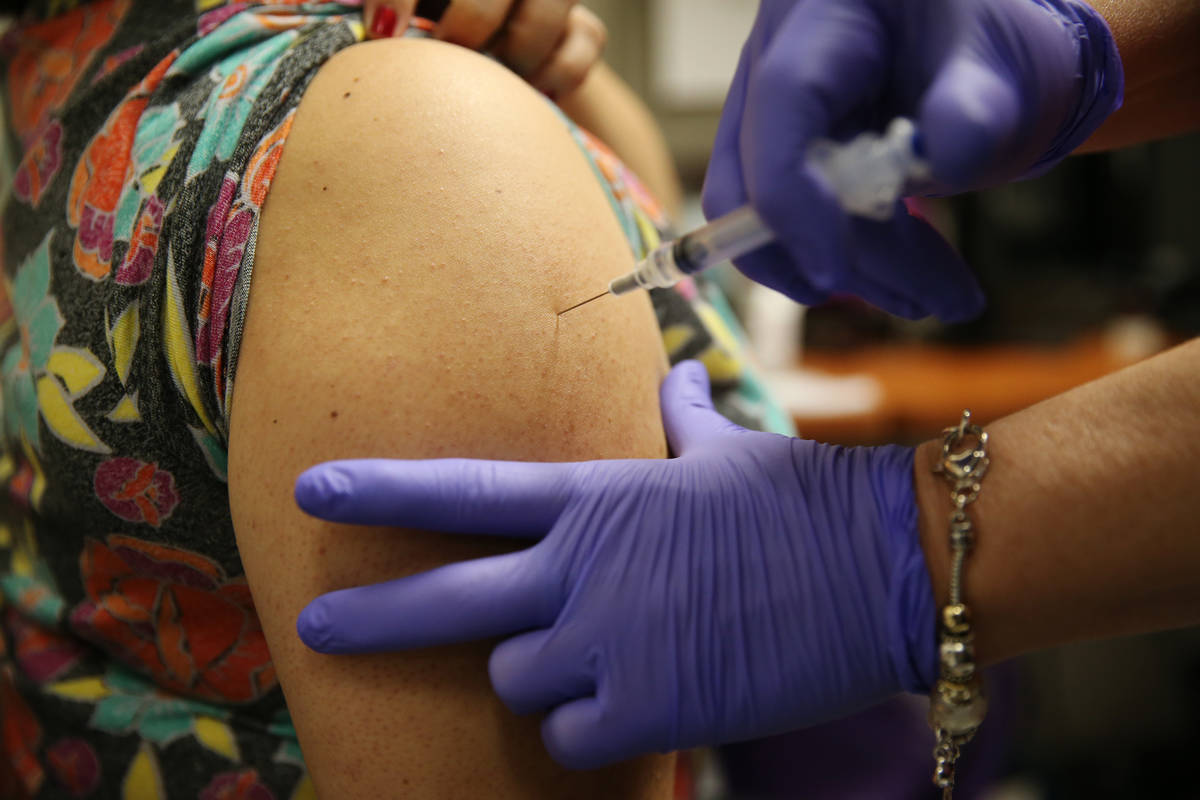Influenza activity down from past flu seasons
Influenza activity — specifically hospitalizations, deaths and positive test results from sentinel laboratories — has been significantly lower than past years, according to the Nevada Division of Public and Behavioral Health, Office of Public Health Investigations and Epidemiology, which regularly monitors influenza activity in the state.
By week two for the 2020-2021 season, there have been 23 hospitalizations, 1 death and 0.02% specimens testing positive by the sentinel labs. That compares to week two for the 2019-2020 season, when there were 931 hospitalizations, 22 deaths, and 48.3% positivity. For the 2018-2019 season, there were 449 hospitalizations, 13 deaths, and 26.5% of positivity.
The season begins in the fall (on week 40) and continues into the next year (until week 20) with each week identified to coincide with the Centers for Disease Control and Prevention Morbidity and Mortality Weekly Report.
Many states are reporting low influenza activity this season. It is believed that these decreases are because of the adoption of COVID-19 precautions.
“Along with improved hygiene practices, significantly more people are wearing masks this season and avoiding close contact and group gatherings with others, which helps prevent the spread of the virus,” said Maximilian Wegener, DPBH influenza surveillance coordinator.
Influenza-like illness is another indicator OPHIE monitors, which gives insights into the magnitude of the influenza activity for the state. Because of the circulation of COVID-19 this season, it is anticipated that ILI activity will remain elevated since those with COVID-19 typically would meet classification criteria for ILI.
Influenza-like illness is defined as fever (temperature higher than 100 degrees Fahrenheit, 37.8 degrees Celsius) in the presence of cough and/or sore throat without a known cause other than influenza. Though ILI for week two for this current season is around the same percentage that was seen in the previous two seasons, the number of those seen in emergency department, inpatient and outpatient settings is the lowest it has been compared to the previous two seasons.
Though flu numbers are low, public health officials highly recommend that the public still get their seasonal influenza vaccination if they have not done so.
“Influenza cases typically start to peak in the beginning of February to the middle of March, and little is still known about the severity of being co-infected with influenza and COVID-19,” Wegener said. “Precautions to prevent them are crucial, and vaccines continue to play a major role in preventing the spread of both. We recommend getting the influenza vaccine as soon as possible to avoid any delays in receiving the COVID-19 vaccine.”
The Centers for Disease Control and Prevention recommends that people who receive any vaccine, including the one for influenza, need to wait at least 14 days to get the COVID-19 vaccine. Those who get the COVID-19 vaccination would need to wait 14 days to get another vaccination.
More information can be found at NVFluFighter.org

















